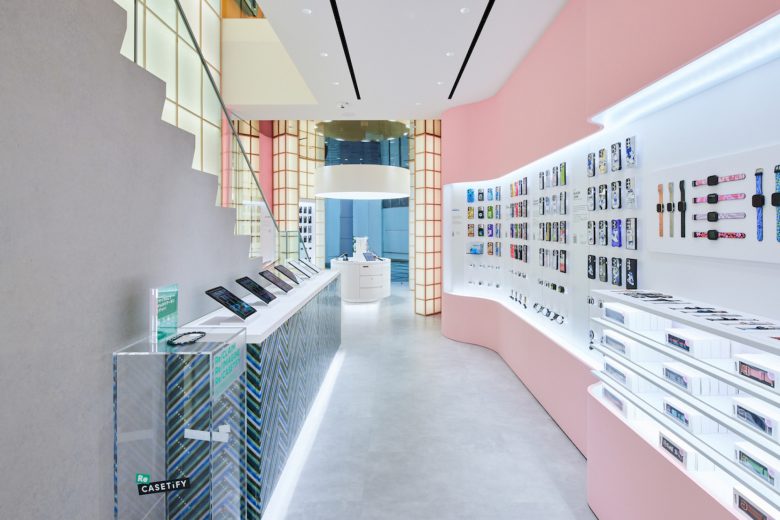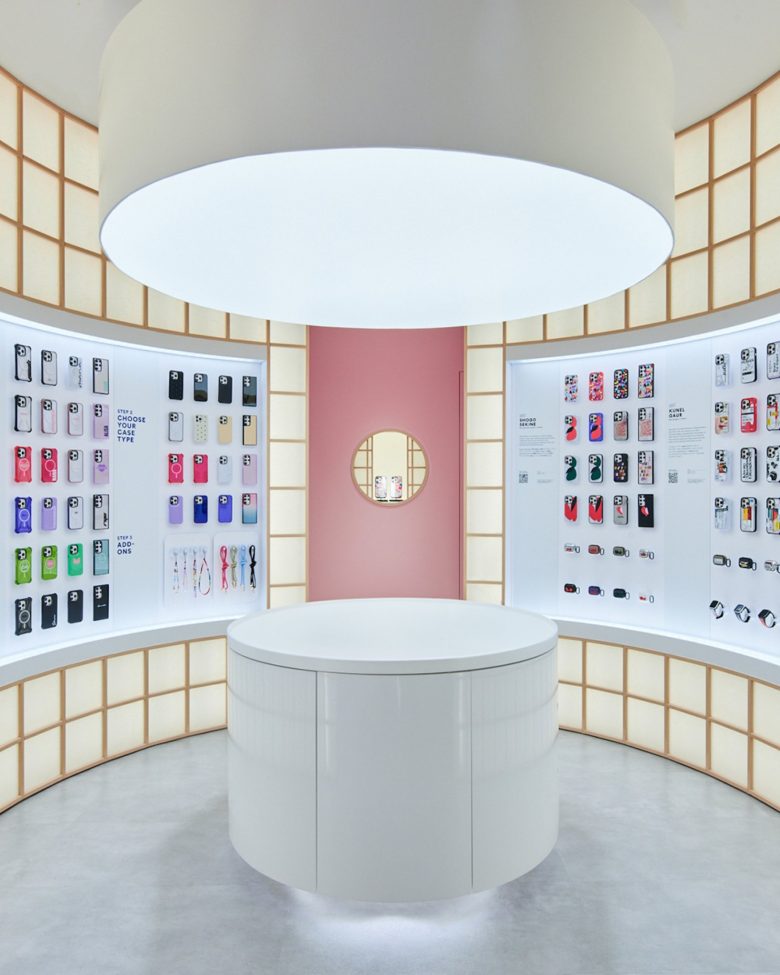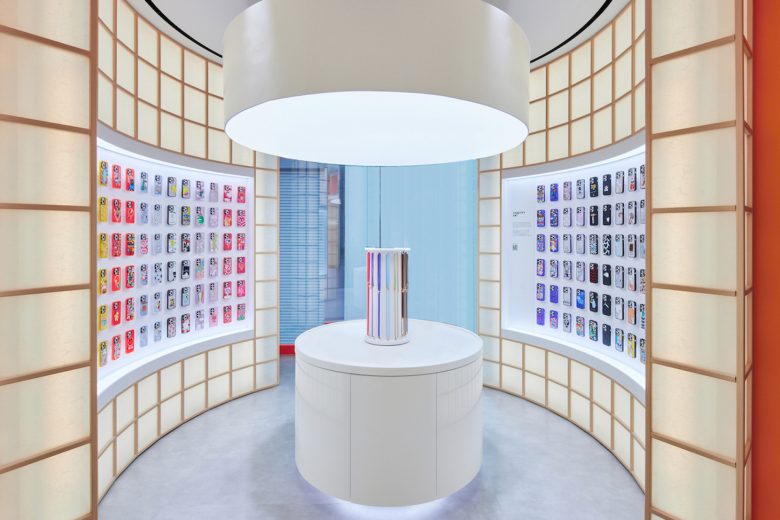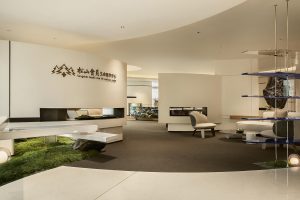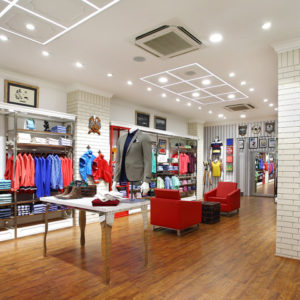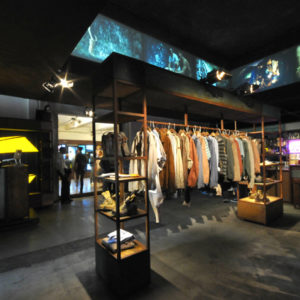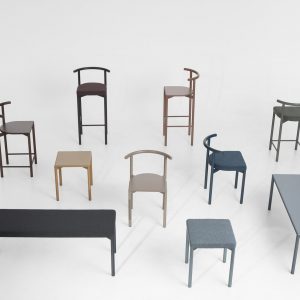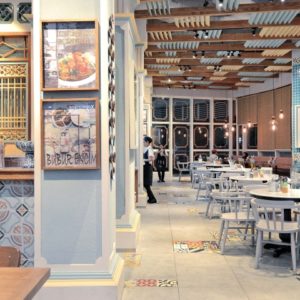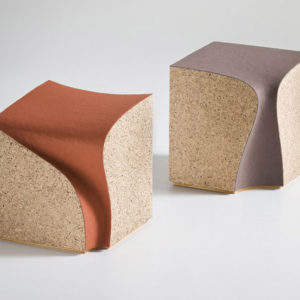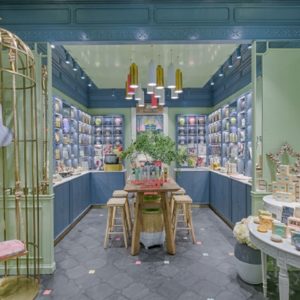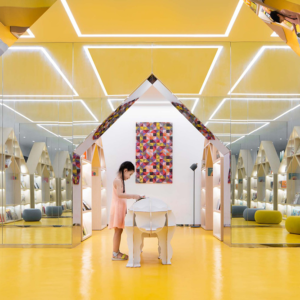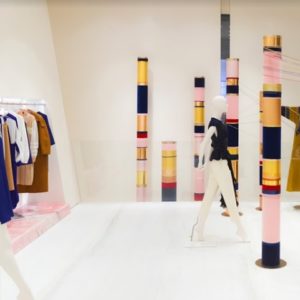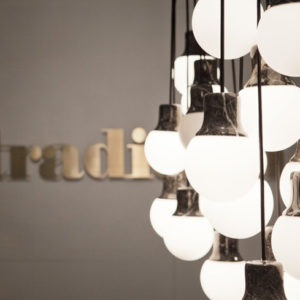
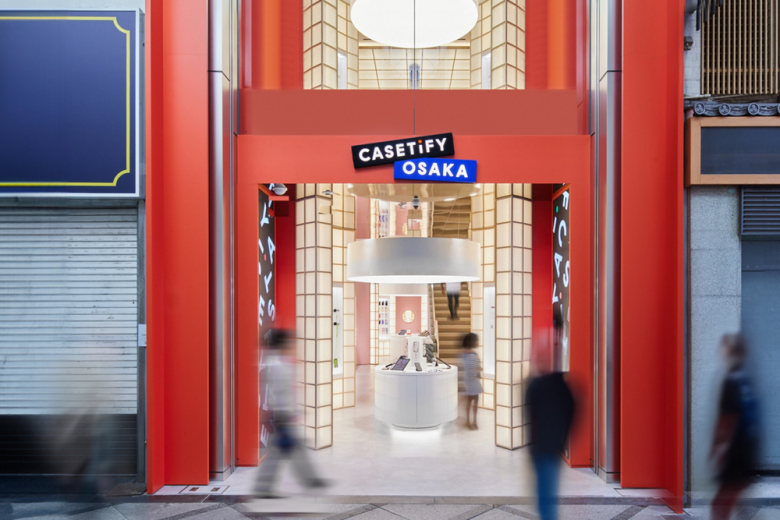
Leaning into its surroundings with its interior design, Casetify’s Osaka store curates a location-specific experience encouraging customers to opt for an in-person shopping trip.
Key features
Smartphone accessories retailer Casetify opened a two-storey flagship store in the Shinsaibashi neighbourhood of Osaka, Japan, designed by André Fu Studio. The studio sought to integrate the local architectural identity and the buzz of the city’s main shopping district into the space, using bright colours characteristic of the area and drawing inspiration from the craftsmanship of traditional Japanese shoji lanterns. Connected undulating walls covered in backlit paper screens mirror the traditional lamps. Display walls where phone cases and accessories are showcased are lined with a gridded pattern fashioned from wood. Bold colours like red and pink are employed in the space, reflecting the decorative language of the surrounding area and the brand’s products. At the back of the store, customers can use a screen to design customized phone accessories as they can online.
FRAME’s take
‘Collectively embracing and celebrating the situational aspects of the neighbourhood in an authentic way helps construct a greater sense of place and gives people a defined reason, atmosphere and energy to come to that shopping district,’ Doug Stephens, founder of Retail Prophet, said about the role localism will play in the design of retail spaces. Embracing local design language is one way that retailers – especially those who operate mostly online – are attempting to bolster their physical presence. By situating itself confidently in its surroundings, the retail space makes a genuine appeal to its customers, straying away from cookie-cutter store design and instead offering a location-specific experience.
With a vast online presence – according to its website, Casetify’s products have reached one in seven millennials worldwide – the brand’s flagship space should try to cultivate a space which makes it worthy of paying an in-person visit to. The space achieves this by embracing its locality not only by mimicking a traditional Japanese design element but by echoing its surroundings.
Designed by André Fu Studio
